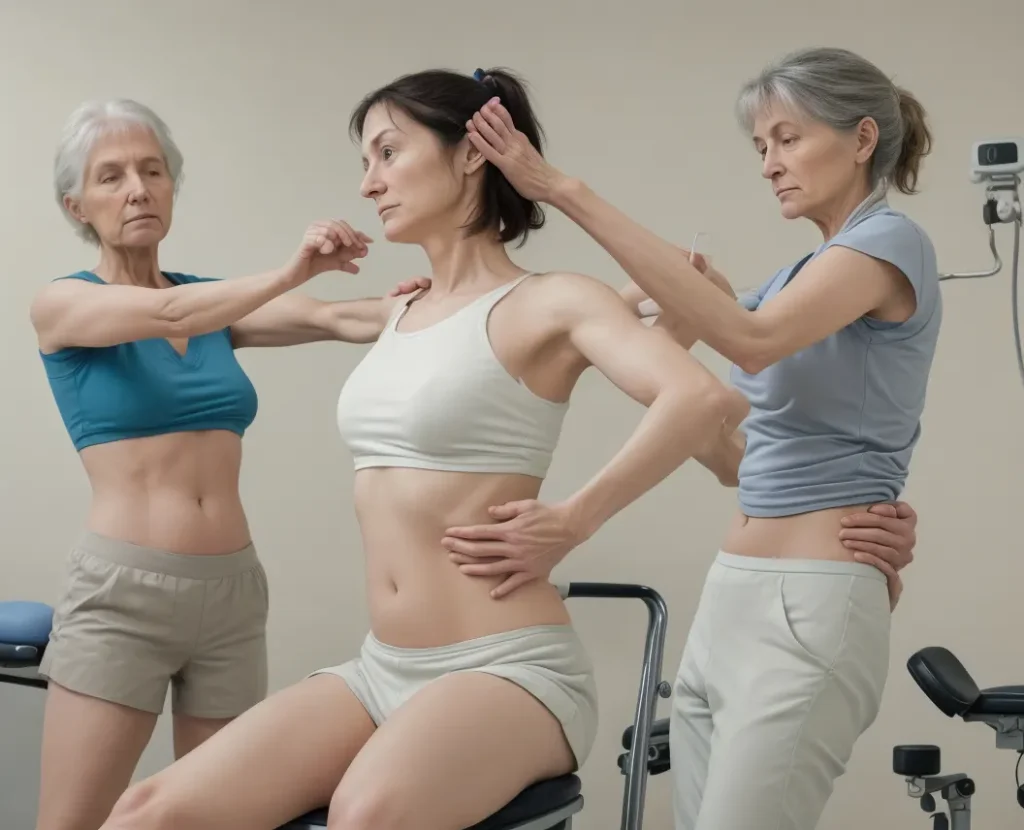Introduction
When it comes to maintaining and improving our health, we often think about proper nutrition, regular exercise, and a healthy lifestyle. However, there’s another essential aspect that plays a significant role in our overall well-being – physical therapy. In this article, we will explore the world of physical therapy, its benefits, the various techniques involved, and how it can be a game-changer in improving your quality of life.
What is Physical Therapy?
Physical therapy, often referred to as PT, is a specialized healthcare field focused on optimizing physical function and mobility in individuals with certain health conditions or injuries. It involves various therapeutic exercises, manual techniques, and modalities that aim to alleviate pain, improve movement, and restore functional abilities.
The Importance of Physical Therapy
Physical therapy plays a crucial role in enhancing recovery and reducing the risk of long-term disabilities. It aids in the management of chronic conditions, post-surgery rehabilitation, and sports-related injuries. PT not only targets specific physical issues but also takes into account the psychological well-being of patients, fostering a holistic approach to healing.
Common Physical Therapy Techniques

There is a wide array of physical therapy techniques employed by professionals. Some of the most common ones include:
1. Manual Therapy: Skilled therapists use their hands to manipulate muscles, joints, and soft tissues, enhancing mobility and reducing pain.
2. Therapeutic Exercises: Tailored exercises and stretching routines are designed to improve strength, flexibility, and balance.
3. Heat and Cold Therapies: The application of heat or cold packs helps in reducing inflammation and promoting healing.
4. Electrical Stimulation: This technique uses electrical impulses to stimulate nerves and muscles, aiding in pain relief and muscle re-education.
Benefits of Physical Therapy
Physical therapy offers a plethora of benefits for individuals of all ages. Some key advantages include:
1. Pain Management: PT addresses the root cause of pain, providing relief without the use of medication.
2. Improved Mobility: Whether you’re recovering from an injury or managing a chronic condition, physical therapy can enhance your mobility and range of motion.
3. Enhanced Balance and Coordination: Physical therapy exercises target balance and coordination, reducing the risk of falls and improving overall stability.
4. Avoiding Surgery: In some cases, physical therapy can eliminate the need for surgery or facilitate a smoother post-surgery recovery.
Who Can Benefit from Physical Therapy?

Physical therapy is not limited to athletes or individuals with severe injuries. It can benefit a wide range of people, including:
1. Athletes: PT can help athletes recover from sports injuries and improve their performance.
2. Seniors: Older adults can use physical therapy to maintain mobility and independence as they age.
3. Chronic Pain Sufferers: PT provides relief for individuals dealing with chronic pain conditions like arthritis.
4. Post-Surgery Patients: Physical therapy aids in post-surgery rehabilitation, speeding up recovery and reducing complications.
How to Choose the Right Physical Therapy Clinic
Finding the right physical therapy clinic is essential for getting the best results. Consider the following factors when making your choice:
1. Credentials and Experience: Ensure the therapists are licensed and experienced in treating your specific condition.
2. Patient Reviews and Testimonials: Read reviews and testimonials from previous patients to gauge the clinic’s reputation.
3. Location and Accessibility: Opt for a clinic that is convenient to reach, especially if you require regular sessions.
4. Personalized Treatment Plans: Look for a clinic that designs personalized treatment plans tailored to your needs.
Understanding the Physical Therapy Process

Before beginning physical therapy, it’s essential to understand the treatment process:
1. Initial Evaluation: Your therapist will assess your condition, medical history, and goals to create a personalized treatment plan.
2. Treatment Sessions: Regular therapy sessions will involve various exercises and techniques to address your specific needs.
3. Progress Monitoring: Your progress will be regularly evaluated, and the treatment plan may be adjusted accordingly.
4. Home Exercises: In many cases, therapists prescribe exercises for you to perform at home to accelerate recovery.
Physical Therapy for Different Conditions
Physical therapy is versatile and can help with various health conditions, including:
1. Orthopedic Injuries: PT aids in recovery from fractures, sprains, and other musculoskeletal injuries.
2. Neurological Conditions: Patients with conditions like stroke or Parkinson’s disease can benefit from PT to regain movement and functionality.
3. Cardiopulmonary Rehabilitation: Physical therapy assists in recovering from heart and lung-related issues.
4. Pediatric Conditions: Children with developmental delays or injuries can benefit from pediatric physical therapy.
Preparing for a Physical Therapy Session

To make the most of your physical therapy sessions, follow these tips:
1. Wear Comfortable Clothing: Dress in comfortable attire that allows for easy movement.
2. Be Honest About Your Condition: Provide accurate information to your therapist about your pain, limitations, and medical history.
3. Ask Questions: Don’t hesitate to ask your therapist any questions or concerns you may have about the treatment.
4. Set Realistic Goals: Work with your therapist to set achievable goals for your rehabilitation journey.
Exercises and Activities in Physical Therapy
Physical therapy sessions may involve various exercises and activities, such as:
1. Stretching Exercises: Improve flexibility and reduce muscle tension with stretching routines.
2. Strength Training: Build muscle strength through resistance exercises.
3. Balance and Coordination Exercises: Enhance stability and reduce the risk of falls.
4. Cardiovascular Activities: Improve heart health and endurance through cardiovascular exercises.
Monitoring Progress and Adjusting Treatment

Regular monitoring is crucial in physical therapy to ensure progress and make necessary adjustments. Your therapist will track your improvement and may modify the treatment plan as needed.
Overcoming Challenges in Physical Therapy
Physical therapy may have its challenges, such as:
1. Discomfort: Some exercises might cause temporary discomfort, but your therapist will work with you to manage it effectively.
2. Patience and Persistence: Progress may take time, but staying consistent with the therapy will yield results.
3. Avoiding Overexertion: It’s essential to follow your therapist’s guidelines to avoid overexerting yourself and risking further injury.
4. Psychological Barriers: Fear and anxiety can affect progress, but a supportive therapist can help you overcome them.
Combining Physical Therapy with Other Treatments
Physical therapy often complements other treatments, such as:
1. Occupational Therapy: Helps in improving daily living skills.
2. Chiropractic Care: Assists in spinal alignment and musculoskeletal health.
3. Massage Therapy: Reduces muscle tension and promotes relaxation.
4. Acupuncture: May provide pain relief and aid in recovery.
Conclusion
The Role of Physical therapy is a vital tool in achieving optimal physical health and well-being. From injury recovery to chronic pain management, it offers numerous benefits that can significantly improve your quality of life. By working with skilled therapists, setting achievable goals, and staying committed to the process, you can achieve remarkable results in your journey towards better health.
FAQs
Is physical therapy painful? Physical therapy exercises may cause temporary discomfort, but they are designed to promote healing and improve mobility in the long run.
How long does a typical physical therapy session last? A standard physical therapy session usually lasts between 30 minutes to an hour, depending on your specific needs and treatment plan.
Is physical therapy only for athletes or injured individuals? No, physical therapy is beneficial for people of all ages and lifestyles, including athletes, seniors, chronic pain sufferers, and post-surgery patients.
Can physical therapy prevent the need for surgery? In some cases, physical therapy can help avoid surgery by addressing the root cause of the problem and promoting natural healing.
Are home exercises necessary during physical therapy? Yes, therapists often prescribe home exercises to complement the in-clinic sessions and accelerate the recovery process.



























